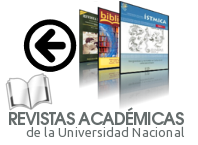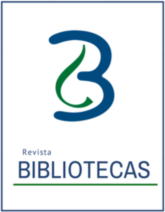Historical evolution of cataloging over time
DOI:
https://doi.org/10.15359/rb.42-2.9Keywords:
Cataloging , information processing, standardization, historyAbstract
The article examines the evolution of cataloging from ancient Sumerian tablets to current standards in the contemporary digital age. The relevance of structuring and classifying knowledge is highlighted in order to expide access and retrieval of information optimally. The milestones and key figures that have shaped the organization of knowledge over the centuries are analyzed, as well as the theoretical and practical currents that have influenced the development of cataloging regulations.
The continuous evolution of cataloging procedures is highlighted, from the first book inventories to the adoption of contemporary standards such as RDA and conceptual models such as FRBR and FRAD. Likewise, the incorporation of technological advances such as the MARC 21 format and the implementation of linked data are mentioned, which have expanded search and discovery capabilities. The article emphasizes the importance of standardization and the processing of information in today's digital world.
References
Bianchini, C., y Guerrini, M. (2009). From bibliographic models to cataloging rules: Remarks on FRBR, ICP, ISBD, and RDA and the relationships between them. Cataloging & Classification Quarterly, 47(2), 105-124.
Biblioteca Nacional de Maestras y Maestros (BNM), Ministerio de Educación de Argentina. (2012). Historia de la catalogación y los procesos técnicos. http://www.bnm.me.gov.ar/novedades/?p=2409
Blake, V. (2002). Forging the Anglo-American cataloging alliance: descriptive cataloging, 1830-1908. Cataloging & classification quarterly, 35 (1-2), 3-22.
Carpenter, M. (2002). The original 73 rules of the British Museum: A Preliminary Analysis. Cataloging & classification quarterly, 35 (1-2), 23-36.
Danladi, D., y Patrick, P. (2016). Exploring Best Cataloging Rules in the 21st Century: Changes from AACR2 to RDA. An International Journal of Information and Communication Technology (ICT), 13(1), 207-213. https://www.ajol.info/index.php/ict/article/view/138801
Garduño Vera, R., y Cabral Vargas, B. (2008). Módulo II: formatos bibliográficos internacionales: MARC 21: material didáctico para el aprendizaje a distancia. Universidad Nacional Autónoma de México, Facultad de Filosofía y Letras.
Juncà Campdepadrós, M. (2009). Sistemas de clasificación documentales. En M. Juncà Campdepadrós y D. Martínez Ferreras, Fundamentos de Lenguajes documentales. Universitat Oberta de Catalunya.
Miksa, F. (2009). Information organization and the mysterious information user. Libraries & the cultural record, 44(3), 343-370.
Miksa, S. D. (2021). Cataloging principles and objectives: History and development. Cataloging & Classification Quarterly, 59(2-3), 97-128. https://doi.org/10.1080/01639374.2021.1883173
Miranda Arguedas, A. (1992). Fundamentos de la catalogación actual. ALEBCI. https://repositorio.una.ac.cr/handle/11056/20370
Obille, K. L. B. (2012). AACR2 to RDA: A Paradigm Shift? Journal of Philippine Librarianship, 32, 1-12.
Sakr, S., Wylot, M., Mutharaju, R., Le Phuoc, D. y Fundulaki, I. (2018). Linked Data: Storing, Querying and Reasoning. Springer.
Salta, G. (2007). Cómo llegamos a la RDA: Enfoque histórico [Conferencia]. III Encuentro Internacional de Catalogadores. Buenos Aires, Argentina.
Taylor, A. G. (2004). Organization of recorded information. Development of the organization of recorded information in western civilization (pp. 49-58). Libraries Unlimited.
Tillet, B. (2003). ¿Qué es FRBR?: un modelo conceptual del universo bibliográfico. Technicalities, 25(5).
Tillet, B. (s. f.). RDA: Cambios en las pautas de catalogación y desafíos para la implementación-Manual para Instructor. https://www.loc.gov/catdir/cpso/RDA /RDAcambios_instructor.pdf
Universo Abierto. (18 de febrero de 2016). La evolución del catálogo de la biblioteca: tecnología catalográfica desde los papiros a los ordenadores. https://bibliotecaceu.wordpress.com/2016/02/25/la-evolucion-del-catalogo-de-la-biblioteca-tecnologia-catalografica-desde-los-papiros-a-los-ordenadores/
Willer, M. Dunsire, G y Bosancic, B. (2010). ISBD and the Semantic Web. Italian Journal of Library and Information Science, 1(2), 213-236. DOI: 10.4401/jlis.it-4536
Downloads
Published
How to Cite
Issue
Section
License

This work is licensed under a Creative Commons Attribution-NonCommercial-ShareAlike 4.0 International License.
Bibliotecas provide immediate open access to their content, based on the principle of facilitating research to the public free of charge and free of charge to promote the global exchange of knowledge.
The journal Bibliotecas is a publication hosted by a public higher education institution, which is supported by public resources. Since its inception, the magazine has offered all its contents free of charge without any restriction on the rights of: reading, downloading and printing in full text. Works published in libraries may be analyzed, quoted and reproduced in whole or in part, mentioning the original source.
The journal Bibliotecas is licensed under the Creative Commons Attribution - Non-Commercial - Share Equal, 4.0 International license; therefore, it is allowed to: share, copy and redistribute the material in any medium or format.

Este obra está bajo una licencia Creative Commons Atribución-NoComercial-CompartirIgual 4.0 Internacional.








